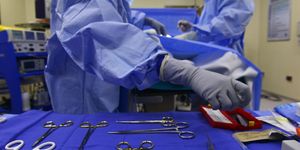Simplifying Film Animation via Drones
The film industry is believed by many computer scientists to be soon revolutionized by the use of drones especially in their ability to replace dozens of cameras. Additionally, recent projects have concluded that the unique mini aircraft holds great potential in animated film.
‘Elsa’ from Disney’s animated film ‘Frozen’.
Credit: New York Film Academy, “A Quick History of Animation”
"It's a very time-consuming task to make figures look realistic in an animated film," explains Tobias Nägeli, a computer scientist. "For the figures to appear natural, the first step is to film an actor performing the movements. The second step is then to build the animated figure around this."
In particular, to reconstruct the actor's movements using 3D animation they must first be recorded with at least two cameras at the same time. The motion of sequences will cover a great deal of space creating a vast amount of technical work. The complication requires either installing multiple cameras at variable locations or using a few cameras at the same time via tricky installations. Such process is believed to soon become obsolete.
Therefore, researchers at ETH Zurich and Delft University of Technology created a system that is composed of two commercially available drones and a laptop. "What makes our system so unique is that it can also reliably capture sudden and fast movements," explains Nägeli. "Of course, this kind of demo system is not good enough to meet the requirements of the film industry yet. But it does offer a promising approach."
“Actors' movements can be easily recorded using commercial drones, which greatly reduces the technical effort required for the animated film.”-ScienceDaily
Credit: Copyright ETH Zurich / Tobias Nägeli
The drones will serve as a “monitor” for the actor's every move by automatically adjusting their position so the intended target is always captured from two angles.
Watch the video below which describes how various tests were used to show that the system can be used for tracking human movement over longer distances:
(Video: ETH Zurich / Tobias Nägeli)
"Until now, it has been impossible to perform a comprehensive motion analysis on runners, for example, because it is much too complicated," says Nägeli. "With our system, it's very easy now to examine how a runner's kinetics changes over a period of time."
Source: ETH Zurich










